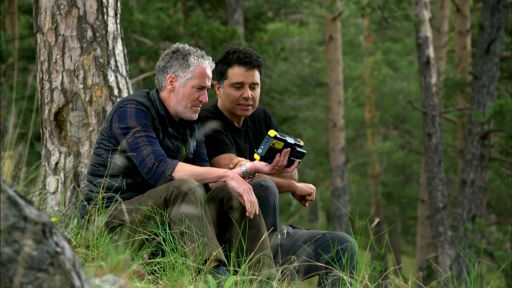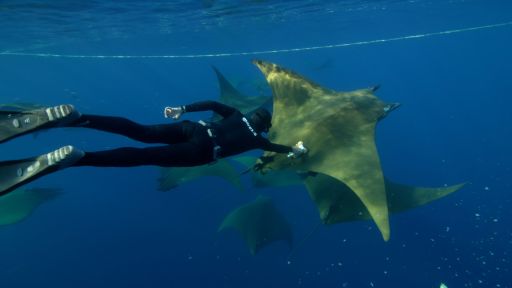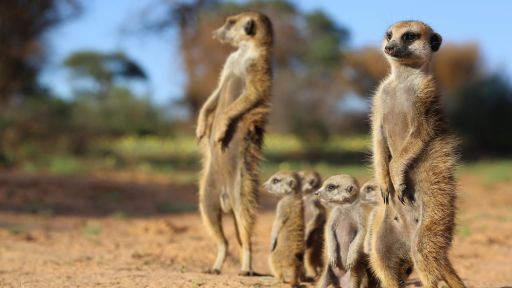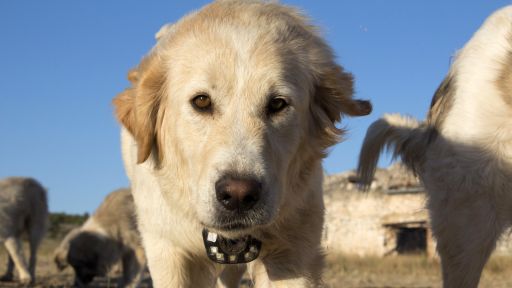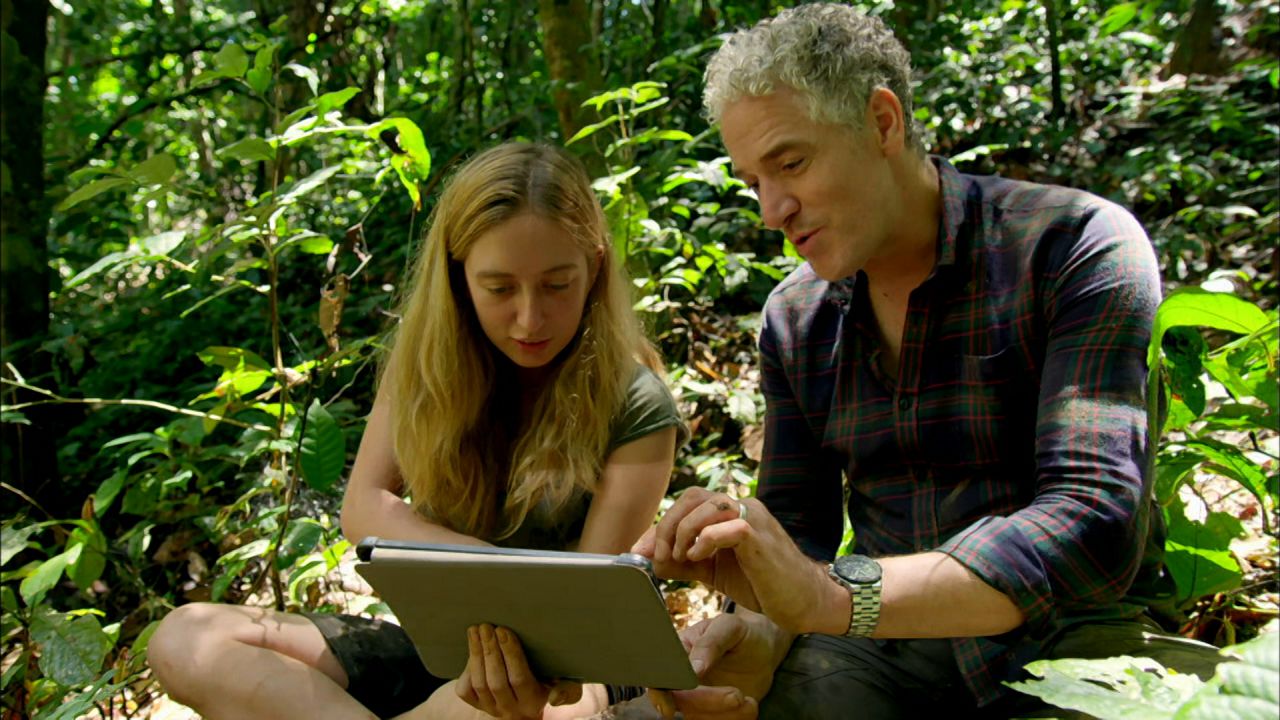
Mimi Swift with “Animals with Cameras” host Gordon Buchanan. Credit: BBC
Mimi Swift is a chimpanzee caregiver at the The Sanaga-Yong Chimpanzee Rescue Centre in Cameroon, a medium-sized country on the West Coast of Africa. The rescue center provides sanctuary for 72 chimps, orphaned as a result of the illegal bushmeat trade. In Animals with Cameras, Mimi is shown caring for Kimbang, a four-year old chimp whose mother was killed by poachers.
NATURE: Tell us about the Sanaga-Yong Chimpanzee Research Center. Why was having this new camera access beneficial to your work?
MIMI: The Sanaga-Yong Chimpanzee Rescue Centre is located in the middle of the beautiful Mbargue forest in Cameroon. Most of the chimps arrive when they are still babies. Their families have been killed for the illegal bushmeat trade, and as they are too small to be worth anything as meat, they are then sold as pets or tourist attractions. This is illegal, so when poachers are caught the authorities confiscate these orphans and take them to Sanaga-Yong. Young orphan chimpanzees are looked after by surrogate human mothers at the sanctuary whilst they build the strength and confidence needed to join a chimpanzee family.
Young chimpanzees spend most of their time in the trees, and it’s impossible to see what they are doing from the canopy floor. This meant that to really understand their behaviour, we needed a way to be up there with them.
What was the process like working with the crew, and how did you ensure the cameras fit properly and unobtrusively on the chimps?
The chimpanzees’ safety and comfort was my main priority, so to ensure the camera fit unobtrusively, I wore it myself for months in the forest with the chimps. I asked friends to yank and pull at it to make sure it couldn’t hurt me, and eventually, I got it to a comfort level where I forgot I was even wearing it. That’s when I let the chimps use it, and, as they had seen this curious item on me for such a long time, they thought it made great fancy dress! Being a surrogate mother to Kimbang and other chimpanzees at the Sanaga-Yong Chimpanzee Rescue Centre is one of the hardest and most rewarding jobs in the world and that’s without getting cameras involved! The first time that I saw their world from the trees it warmed my heart. In many ways they are so similar to us, yet their world in the canopy is a curious wonderland.
What were the most surprising or interesting things the footage revealed?
When I first saw this beautiful young chimp weaving her own nest so intricately it brought tears to my eyes. This is something she should have learned from her mother but she had lost her when she was just six months old. Seeing that she had taught herself and was able to do it so brilliantly was really special. Simply seeing how confidently and elegantly they move through the trees was breathtaking.
How will this footage help your research going forward? Will you continue to explore how new types of technology can assist in your research?
The footage has given me a deeper understanding of? the behavior of young chimpanzees and the importance of the forest for their learning. In the future, I hope to use this knowledge and new camera technology to help improve the conditions of captive chimpanzees.
—

